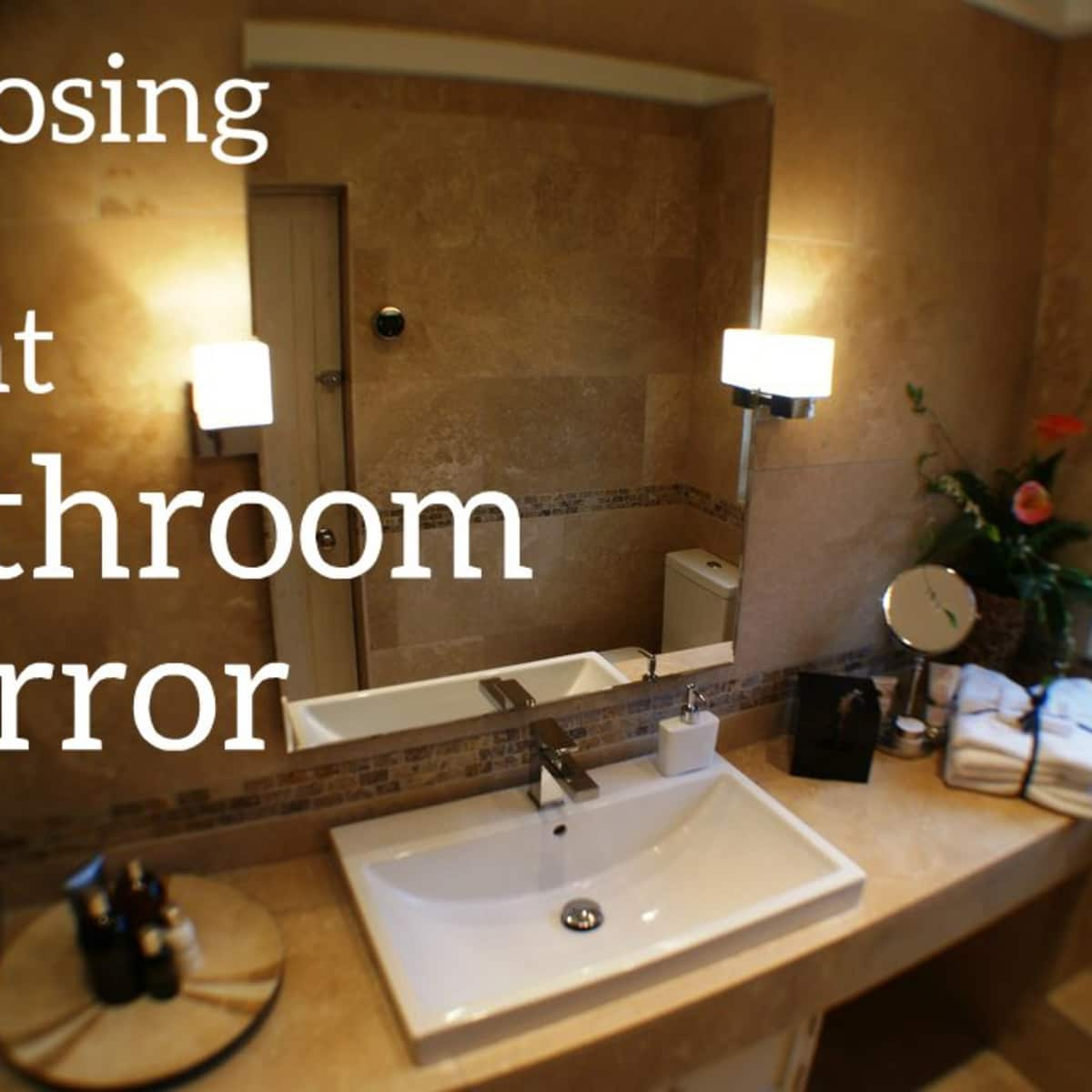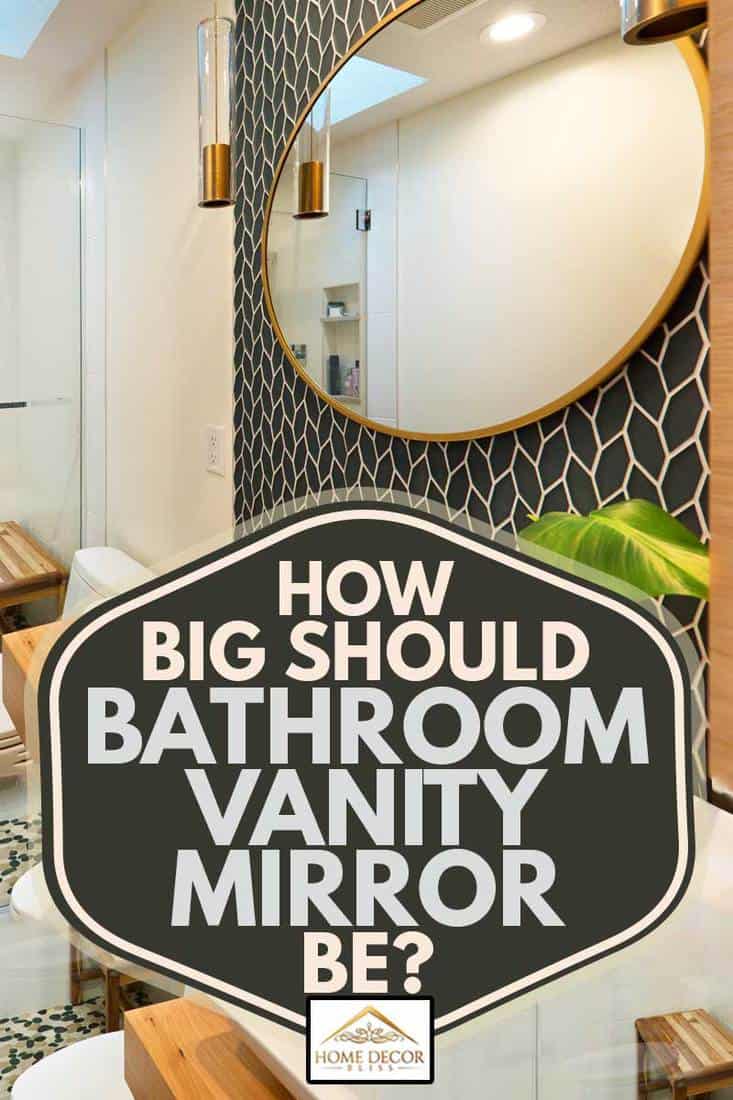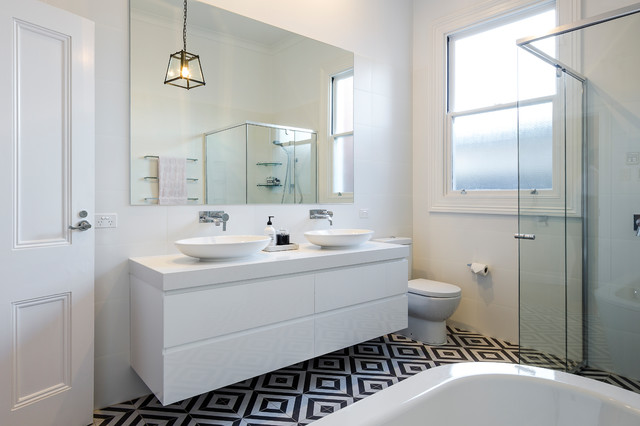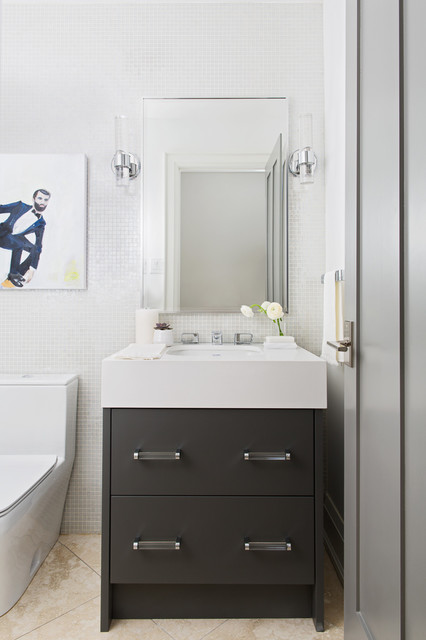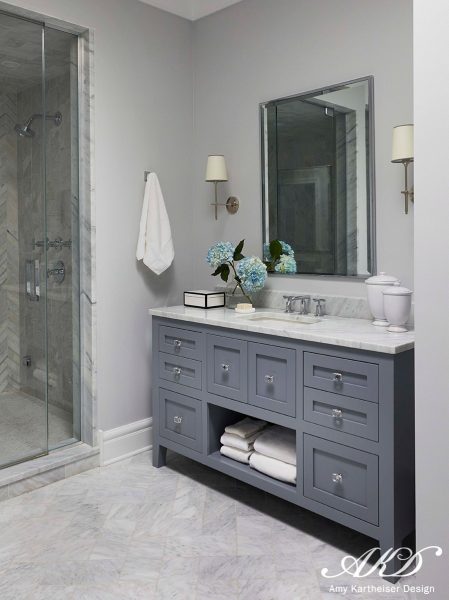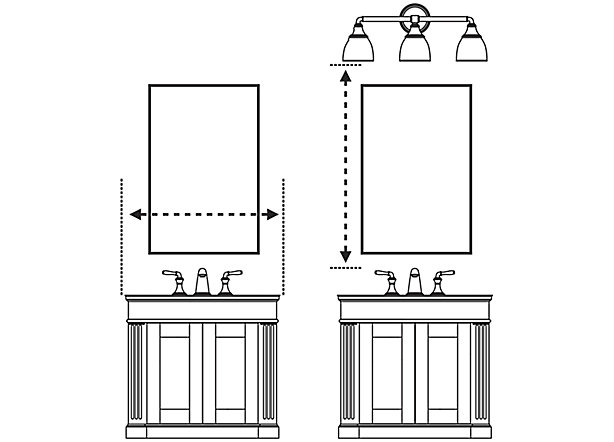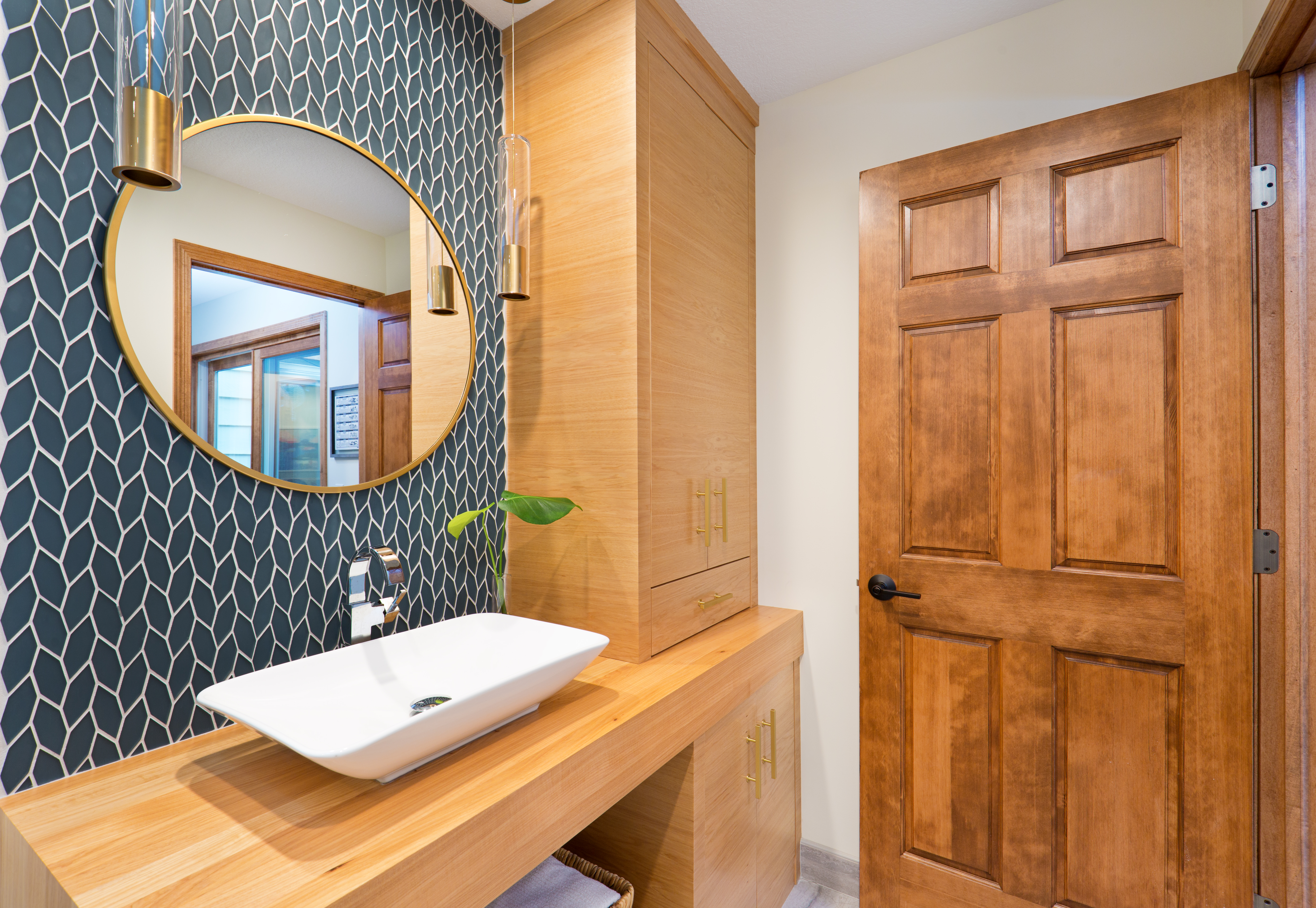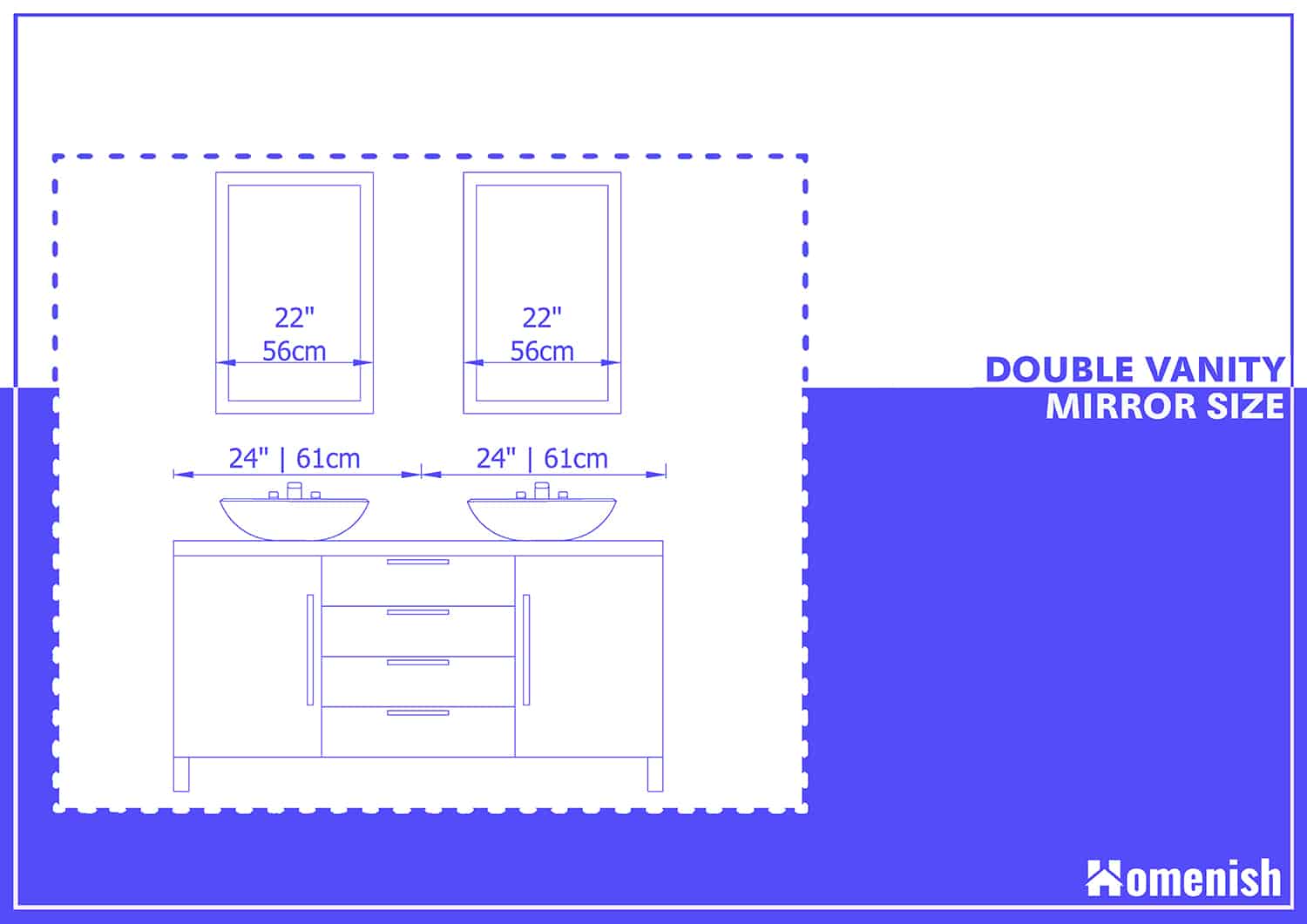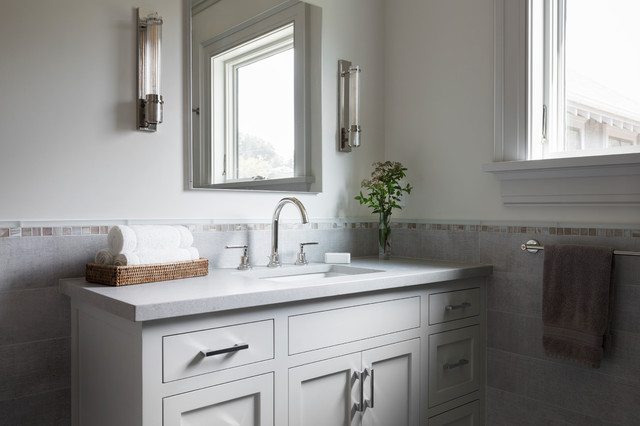Determining the ideal size for a bathroom mirror involves considering both functional and aesthetic factors to ensure it complements the overall design of the space while meeting practical needs. One of the primary considerations when determining the size of a bathroom mirror is the size of the vanity or sink it will be paired with. As a general rule of thumb, the mirror should be slightly smaller than the width of the vanity to ensure a balanced and proportional look. For example, if the vanity is 48 inches wide, a mirror that is around 36 to 40 inches wide would be appropriate.
Another important factor to consider when determining the size of a bathroom mirror is the height of the space above the vanity or sink. Ideally, the mirror should extend several inches above the vanity to provide ample reflection space and ensure it is functional for individuals of varying heights. A mirror that is too short may not provide adequate reflection for taller individuals, while a mirror that is too tall may overwhelm the space or obstruct lighting fixtures.
Additionally, the overall size and layout of the bathroom should be taken into consideration when determining the size of a bathroom mirror. In smaller bathrooms, a larger mirror can help create the illusion of more space by reflecting light and visually expanding the room. However, it’s essential to ensure the mirror is proportionate to the size of the space and does not overwhelm the room. In larger bathrooms, multiple mirrors or a single large mirror spanning the length of the vanity can create a dramatic focal point while providing ample reflection space.
When it comes to shape, round or oval mirrors can soften the look of angular vanities and add visual interest to the space. However, rectangular or square mirrors are more common and may be preferred for their classic and timeless appeal. Ultimately, the choice of shape will depend on personal preference and the overall design aesthetic of the bathroom.
In addition to size and shape, the frame of the mirror can also impact its overall dimensions and visual impact. A thick or ornate frame may add width and height to the mirror, while a frameless or minimalist design can create a sleek and streamlined look. The choice of frame material, finish, and style should complement the overall design of the bathroom while enhancing its aesthetic appeal.
Determining the ideal size for a bathroom mirror involves considering various factors such as the size of the vanity, the height of the space above the vanity, the overall size and layout of the bathroom, and personal preferences in terms of shape and frame style. By carefully evaluating these factors and finding the right balance between form and function, homeowners can choose a mirror size that enhances the overall design of the bathroom while meeting their practical needs for reflection and grooming.
Perfect Vanity Mirror Height
How to Choose a Bathroom Mirror
How to Choose a Bathroom Mirror
How Big Should A Bathroom Vanity Mirror Be? – Home Decor Bliss
How to Pick and Hang the Perfect Bathroom Mirror
Mirrored Cabinets and Mirrors Guide KOHLER
How to Choose a Bathroom Mirror Size Hunker
How to Choose a Double Vanity Mirror Size – Homenish
How to Choose a Bathroom Mirror
Sizing the Mirror Above Your Bathroom Vanity – Dengarden
Whatu0027s the Perfect Size Bathroom Mirror for Your Vanity? – The
How to Choose a Mirror Size for your Bathroom
Related articles:
- Oval Swivel Bathroom Mirror
- Farmhouse Bathroom Mirror
- Bathroom Mirror Design Ideas
- Small LED Bathroom Mirrors
- Bathroom Mirrors Vintage Style
- Decorative Bathroom Mirrors Sale
- Aluminum Framed Bathroom Mirrors
- Bathroom Mirrors With Lights Above
- Large Lighted Bathroom Mirror
- 16 Inch Bathroom Mirror
How Big Should A Bathroom Mirror Be
Bathroom mirrors are essential components of any bathroom. They serve many purposes, including grooming, adding light to the space, and enhancing the aesthetic appeal of the room. However, when it comes to choosing the right size for your bathroom mirror, it can be overwhelming. There are many factors to consider, including the size of the bathroom, style preferences, and budget.
In this comprehensive guide, we will explore how big a bathroom mirror should be. We will also answer frequently asked questions about bathroom mirrors to help you make an informed decision.
Factors To Consider When Choosing The Right Size For Your Bathroom Mirror
Before deciding on the size of your bathroom mirror, you need to consider several factors:
The Size Of Your Bathroom
The size of your bathroom is a crucial factor when choosing the right size for your mirror. If you have a small bathroom, you may want to opt for a smaller mirror that does not overpower the space. Similarly, if you have a larger bathroom, you can choose a bigger mirror that complements the space.
The Style Of Your Bathroom
The style of your bathroom is also an important consideration when choosing the right size for your mirror. If you have a modern minimalist bathroom, you may want to opt for a smaller mirror that blends in with the overall design. On the other hand, if you have a traditional or ornate bathroom, you may want to choose a bigger mirror that adds to the aesthetic appeal of the space.
The Purpose Of The Mirror
Another factor to consider is the purpose of the mirror. If you use it mainly for grooming purposes like applying makeup or shaving, you may want a larger mirror that allows you to see your entire face. However, if you use it primarily for checking your outfit before leaving the house, a smaller mirror may suffice.
Your Budget
Your budget is also a crucial consideration when choosing the size of your bathroom mirror. Larger mirrors tend to be more expensive than smaller ones. Therefore, you need to consider your budget before making a final decision.
What Is The Standard Size Of A Bathroom Mirror?
The standard size of a bathroom mirror varies depending on the type of mirror and the manufacturer. However, the most common sizes for bathroom mirrors are between 24-30 inches wide and 30-36 inches tall. These sizes are suitable for most bathrooms and provide adequate space for grooming purposes.
However, if you have a larger bathroom or prefer a more significant statement piece, you can opt for a larger mirror. Large mirrors can range from 42-60 inches wide and 36-72 inches tall. These sizes are ideal for double vanities or large bathrooms where a statement piece is desired.
Can I Use Multiple Small Mirrors Instead Of One Large Mirror In My Bathroom?
Yes, you can use multiple small mirrors instead of one large mirror in your bathroom. This option is ideal if you have limited wall space or prefer a unique look. However, keep in mind that using multiple mirrors can make the space feel cluttered if not done correctly.
What Is The Best Height To Hang A Bathroom Mirror?
The best height to hang a bathroom mirror is at eye level or about 5-6 feet above the floor. This height allows you to see yourself clearly without straining your neck or eyes.
Should I Choose A Framed Or Frameless Bathroom Mirror?
The choice between a framed or frameless bathroom mirror depends on personal preference and style. Framed mirrors add an extra layer of decoration and can complement the overall design of your bathroom. On the other hand, frameless mirrors provide a clean and modern look that works well in minimalist bathrooms.
Can I Install A Larger Mirror In A Small Bathroom?
Yes, you can install a larger mirror in a small bathroom. A large mirror can create an illusion of more space, making the bathroom feel more significant than it is. Additionally, a larger mirror can reflect more light, brightening up the space.
Choosing the right size for your bathroom mirror is crucial to achieving the desired look and functionality of your space. Factors to consider when choosing the size include the size of your bathroom, style preferences, the purpose of the mirror, and budget. Remember that there is no one-size-fits-all solution for bathroom mirrors, so take your time and explore different options until you find the perfect fit for your bathroom. When choosing a bathroom mirror, it’s essential to consider the size carefully. The size of the mirror can affect the overall aesthetic of your bathroom and its functionality. Factors to consider when choosing the size include the size of your bathroom, style preferences, the purpose of the mirror, and budget. Remember that there is no one-size-fits-all solution for bathroom mirrors, so take your time and explore different options until you find the perfect fit for your bathroom.

